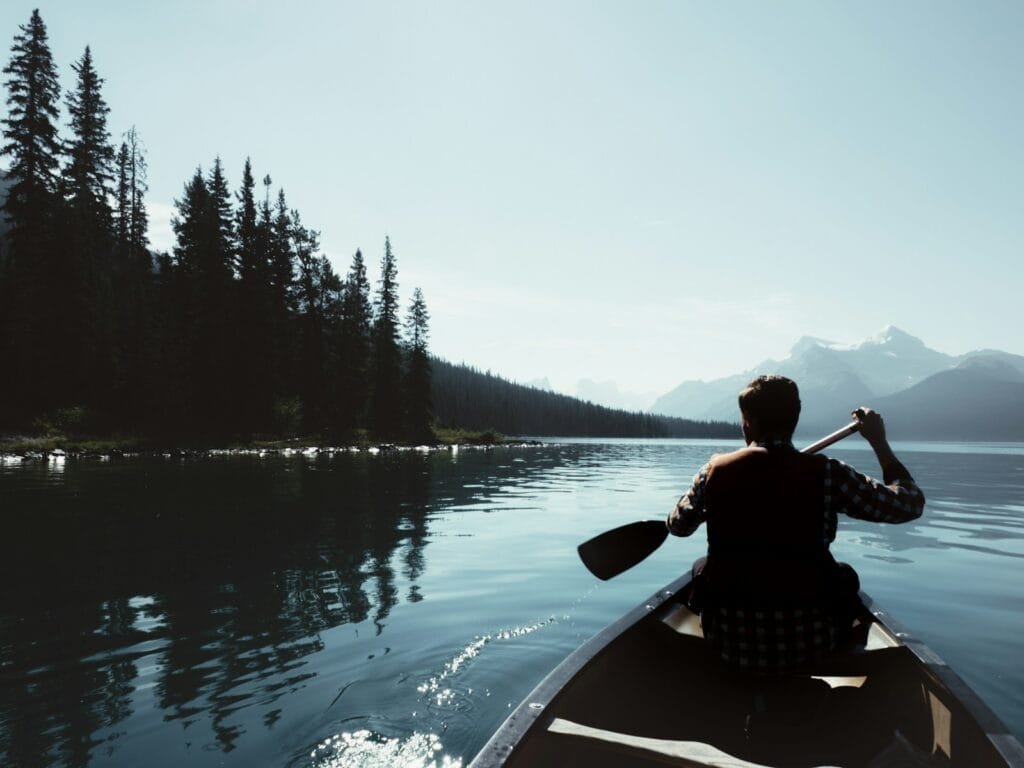A canoe tutorial teaches you how to paddle effectively and safely. Whether you’re a beginner or an experienced paddler, understanding canoeing basics ensures you make the most of your water adventures.
Understanding the Canoe and Its Structure
A canoe is a narrow vessel powered by a paddle. It usually has an open deck and seats for paddlers to sit or kneel. Canoes vary in material, including wood, fiberglass, aluminum, and modern composites. These materials affect the canoe’s weight, durability, and performance.
Key parts of a canoe include:
- Bow: The front of the canoe.
- Stern: The rear end.
- Hull: The body of the canoe.
- Thwarts and Gunwales: Structural elements for stability and support.
Canoeing traditions date back centuries, from indigenous dugouts to modern recreational designs.
Essential Gear for Canoeing
Before getting into the water, prepare with the right equipment.
| Equipment | Purpose |
|---|---|
| Paddle | Used to propel and steer the canoe. |
| Personal Flotation Device (PFD) | Ensures safety in case of capsizing. |
| Dry Bag | Protects belongings from water damage. |
| Footwear | Provides grip and comfort when entering or exiting the canoe. |
| Safety Whistle | For signaling in emergencies. |

Basic Canoeing Techniques
Getting Into the Canoe
- Position the canoe parallel to the shore or dock.
- Stabilize it by holding the gunwales.
- Step in one foot at a time, keeping your weight centered.
Holding the Paddle
Hold the paddle with one hand on the grip and the other on the shaft. The grip hand steers, while the shaft hand powers each stroke.
Paddling Strokes
| Stroke | Purpose |
|---|---|
| Forward Stroke | Propels the canoe forward. |
| Backstroke | Slows or reverses the canoe. |
| Draw Stroke | Moves the canoe sideways. |
| J-Stroke | Keeps the canoe moving straight with minimal correction. |
Tips for Steering and Maneuvering
Steering
- Use the J-stroke to maintain a straight course.
- Paddle on alternating sides to balance direction.
Turning
- Execute the sweep stroke by making a wide arc with the paddle.
- Combine strokes for sharper turns.
Balancing
- Keep your body aligned with the canoe’s centerline.
- Avoid sudden movements that might tip the canoe.
Canoe Safety Guidelines
- Always wear a PFD.
- Check weather conditions before heading out.
- Practice self-rescue techniques, such as re-entering a capsized canoe.
- Stay visible by using bright colors or attaching a light if paddling at dusk.
Canoe Styles and Their Applications
| Canoe Style | Best Use |
|---|---|
| Recreational Canoe | Calm waters and short trips. |
| Whitewater Canoe | Rapids and challenging waterways. |
| Touring Canoe | Long-distance paddling. |
| Fishing Canoe | Equipped for angling activities. |
Historical Significance of Canoeing
Canoeing has cultural roots in indigenous communities across North America, Africa, and Asia. Traditionally made from hollowed logs or birch bark, canoes served as essential transportation for trade, hunting, and exploration.
Learn more about canoeing’s rich history at American Canoe Association.
Advanced Tips for Enhanced Skills
- Optimize Paddle Grip: Experiment with paddle lengths to find the right fit.
- Learn Rescue Techniques: Master T-rescues for helping fellow paddlers.
- Improve Endurance: Build strength with practice sessions.
By following this canoe tutorial, you’ll be prepared to paddle with skill and confidence.

